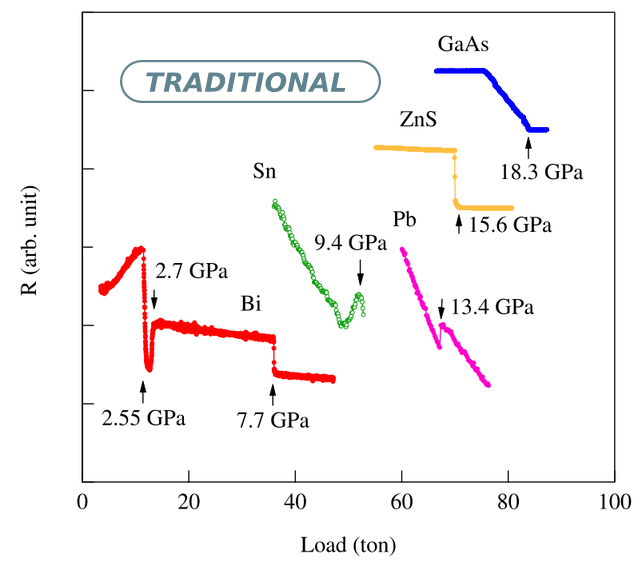Development of two-stage multi-anvil apparatus for low-temperature measurements
DOI:
https://doi.org/10.4279/pip.110006Keywords:
High pressure, low temperature, multi anvilAbstract
The two-stage 6-8 multi-anvil (MA8) apparatus is an important large-volume, high-pressure technique that has been widely used in the high pressure mineralogy and material synthesis, mainly at room temperature or above. Recently, we have successfully developed a two-stage MA8 apparatus for low-temperature physical property measurements. The first-stage anvils at top and bottom sides are fabricated as a single piece in order to reduce the total size of the cylindrical module, which is put in a top-loading high pressure cryostat and compressed by a 1000 ton hydraulic press. A castable, split octahedral gasket with integrated fin was specifically designed in order to introduce the electrical leads from the inside sample container filled with a liquid pressure transmitting medium. By using tungsten carbide (WC) second-stage cubes with a truncated edge length of 3 mm and an octahedral gasket with an edge length of 6 mm, we have successfully generated pressure over 20 GPa at room temperature. Since the high pressure limit can be pushed to nearly 100 GPa by using the sintered diamond second-stage cubes, our MA8 apparatus has a great potential to expand the current pressure capacity for precise low-temperature measurements with a large sample volume.
Edited by: A. Goñi, A. Cantarero, J. S. Reparaz

Downloads
Published
How to Cite
Issue
Section
License
Authors agree to the PIP Copyleft Notice













